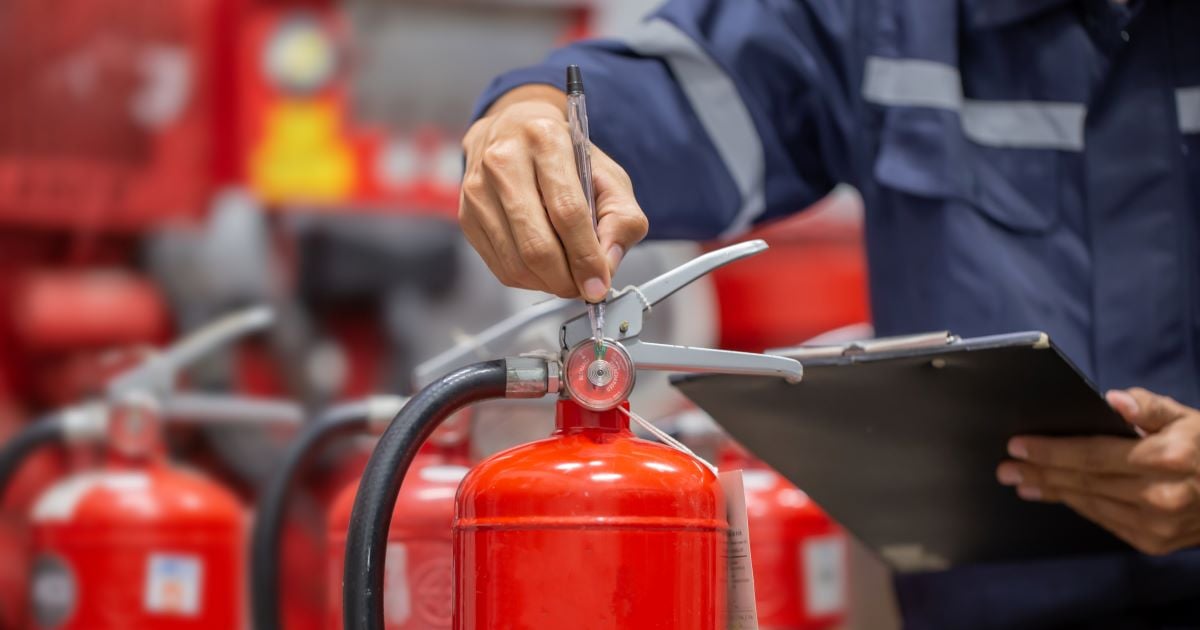Protection against fire is a must for every Sydney business. It’s not just an obligation under the law but an effective way of keeping employees, customers and property safe. The effects of fire can be devastating within minutes. But with proper safety measures in place, a lot of these risks can be reduced or avoided. The combination of fire inspections, electrical system testing and tagging and compliance with CFSP guidelines all contribute to creating a safer work environment and ensuring that the business is in compliance with the Building Code of Australia and local standards of the council.

Why fire inspections are the cornerstone of safety
Fire Inspections are the first line of defense against potential hazards. These inspections make sure that all the components of the building’s fire-protection systems are in good working order and up-to-date. In Sydney many businesses, they have to conduct inspections every six to twelve months, based on nature of the building and the council’s regulations. The inspections can cover everything from sprinklers to fire alarm systems, to smoke detectors, fire hydrants and extinguishers.
What makes inspections crucial is their ability to spot concealed issues before they turn potentially dangerous. A minor flaw in a fire hydrant or a smoke detector that is blocked may appear insignificant at first but in a situation of emergency, these faults could result in the loss of lives. Regular fire inspections are an effective approach for business owners to not only fulfill their compliance obligations, but also protect themselves from unforeseen disasters.
Hidden electrical risks are addressed through testing and tag
Electrical systems can be the main cause of fires at work. Testing and tagging are essential to an action plan for ensuring the safety of fire. The process involves testing electrical equipment for safety, function and compliant, then applying a tag to signal that the product has been inspected. This isn’t just a standard requirement for many companies. It is an effective way of protecting against potential risks that are not obvious to the naked eye.
The old wiring, malfunctioning appliances, or worn-out cables can quickly become fire hazards in the event that they are not checked. Through conducting regular tests and tagging, businesses reduce the possibility of electrical issues leading to a fire outbreak. Additionally, it helps employees feel confident that their working environment is safe, creating confidence and trust within the workplace. In conjunction with testing, fire inspections, and tagging provides a complete security plan to reduce risk on many fronts.
The role of CFSP in ensuring compliance and Certification
In New South Wales, only the Competent Fire Safety Practitioner (CFSP) is able to sign and certify important documents for fire safety, like Annual Fire Safety Statements. The CFSP accreditation guarantees that only professionals with the appropriate qualifications can assess and verify the safety measures for fire. For those who work with a CFSP inspections and reports won’t be a simple piece of paperwork but an authentic evaluation conducted by professionals.
The job of a CFSP is more than just checking boxes. These professionals assess the condition and effectiveness of fire protection systems, present thorough reports, and verify the compliance of regulations. Businesses that are not certified with CFSP certification could be at risk of fines, legal complications and even shut-down if fire safety measures are deemed inadequate. When you partner with experts accredited in fire safety, you’ll be able to assure that your systems are properly maintained. Additionally, you will be able to meet legal requirements without having to put yourself under stress.
Fire Safety: A Lifetime Commitment
Fire safety is not something that is only it is a continuous responsibility for each business owner. Regular inspections, continuous testing of electrical systems and a valid certification under CFSP surveillance create a loop of safety that is never ending. In addition to ensuring compliance with law, this approach promotes a workplace culture of safety. Employees can feel confident knowing that evacuation plans have been formulated Smoke detectors are operational as well as emergency lighting has been verified, and the fire suppression system is in place for use.
Safety in the workplace is a continual process, not just a box that businesses must tick every year. This decreases risks and enhances the reputation of a company. When safety is the top priority, clients and customers are more comfortable. Long-term, proactive fire protection could save you cash by avoiding costly damage, fines or legal battles. It also shields everyone in the building.
Conclusion
Sydney fire safety demands an approach that is multilayered, which includes testing and inspections for fire as well as tagging and certification through an CFSP. Each of these components play a crucial role in helping businesses adhere to laws, but most importantly in securing the lives of people and property. Safety is a constant part of daily business activities and is not a secondary consideration. Businesses can comply with their legal obligations as well as create an even more secure and resilient atmosphere in the near future if safety is a fundamental part of everyday operations.
